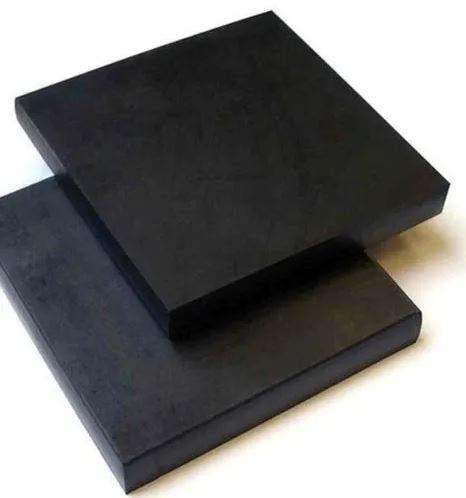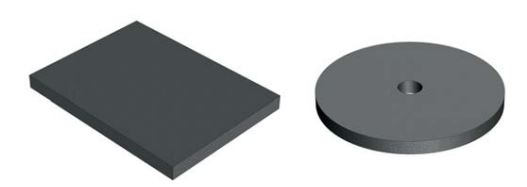
Neoprene Synthetic Elastomeric Bearing Pads
Neoprene Synthetic Elastomeric Bearing Pads can be used for bridges, viaducts, buildings, storage tanks, sealing elements, isolation, etc.
Neoprene Synthetic Elastomeric Bearing Pads are made of an elastomer containing neoprene (polychloroprene) as the base polymer. Neoprene Synthetic Elastomeric Bearing Pads are available primarily in 55 durometer hardness (Shore A) and meet the CAN/CSA-S6-06 standard, or in hardness meeting Ontario OPSS 1202. Neoprene Synthetic Elastomeric Bearing Pads are available in roll form, sheet form or cut to specific bearing pad sizes with or without holes or slots.

Elastomeric Bearing Pad Manufacturing in Canada
Benchmark can cut our Elastomeric Bearing Pads to any shape you require including rectangle, circles, squares etc. We can also cut holes and slots into the Elastomeric Bearing Pads as required or we can bond the bearing pad materials to carbon steel or stainless steel.
Please contact us today for more information about our Elastomeric Bearing Pads we stock in Canada!
Properties of Neoprene Synthetic Elastomeric Bearing Pads:
Material Properties:
Hardness, Shore A
Tensile Strength, MPa
Ultimate Elongation, %
Specified Test Temperature
Change in hardness, Shore A
Change in tensile strength, %
Change in ultimate elongation, %
Specified test temperature
Residual Compression, %
Mounting procedure A 20% strain, 40 +- 2 degrees C
Bond between steel and elastomer laminae, N/mm
Brittleness at -40 degrees C
Low temperature crystallization increase in hardness, Shore A
Data is from CAN / CSA-S6-06
Other grades and durometers are available to meet AASHTO, AREMA or any other standards required.
ASTM Standard Test:
D2240
D412
D412
D573
D573
D573
D573
D395
D395
D1149
D429
D746
D2240
Test Results (Standard)
55 +- 5
Minimum 17.0
Minimum 400
70 h at 100 degrees C
Maximum + 15
Maximum - 15
Maximum - 40
22 h at 100 degrees C
Maximum 35
100 pphm, 100 h No cracks
Minimum 7.0
No Failure
168 h at - 10 degrees C Maximum + 15"
Benchmark accepts no responsibility for individual results obtained. Everyone is strongly recommended to verify data and obtain their own independent test results. This data is subject to change without notice.
Elastomeric Bearing Shape Factor Considerations:
Elastomeric Bearing Shape Factor (S):
The behavior / deflection of an elastomeric bearing under compression is influenced by the shape factor (S), which is defined as the ratio between the loaded area of the bearing and the area which is free to bulge / deflect.
SF = Loaded Area / Bulge Area
SLS = Serviceability Limit State
ULS = Ultimate Limit State
Maximum pressure under permanent load = 4.5 MPa (SLS), 7.0 MPa (ULS)
Maximum pressure under total load = 7.0 MPA (SLS), 10.0 MPa (ULS)

Maximum Shear Deformation of Elastomeric Bearing Pads:
Maximum shear deformation of a plain elastomeric bearing pad is limited to 50% of the total pad thickness.

